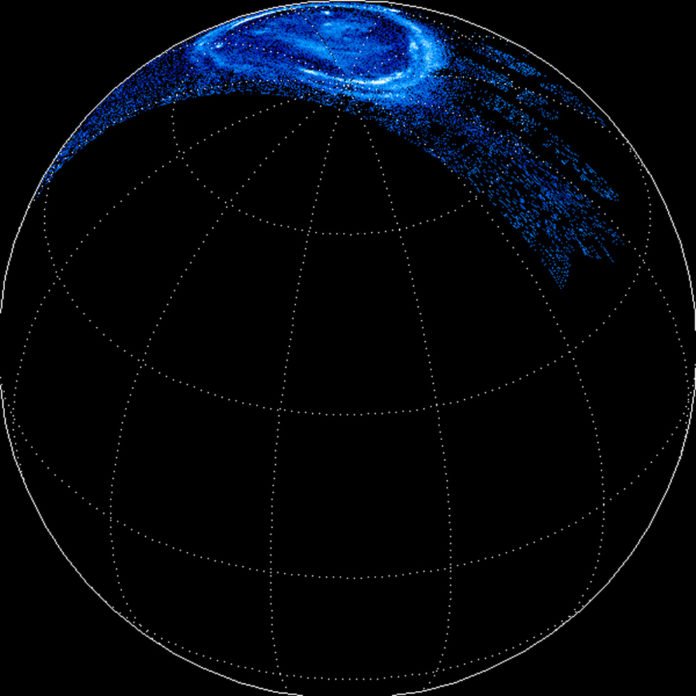Nasa scientists at the Juno Mission have recently discovered massive amounts of energy swirling over Jupiter’s polar regions. The energy is expected to contribute the giant planet, Jupiter’s auroras.
The ultraviolet spectrograph and energetic-particle detector instruments aboard the Jupiter-orbiting Juno spacecraft collected the data. Scientists observed that there are some signs of powerful electric potentials linked to Jupiter’s magnetic field. They were accelerating electrons toward the Jovian atmosphere at energies up to 400,000 electron volts. Scientists found them 10 to 30 times higher than Earth’s auroras potential.
Barry Mauk of the Johns Hopkins University said, “Jupiter’s auroras are the most powerful auroras in the solar system. What’s puzzling us, despite the magnitudes of these potentials at Jupiter, they are observed only sometimes and are not the source of the most intense auroras, as they are on Earth.”
“At Jupiter, the brightest auroras are caused by some kind of turbulent acceleration process that we do not understand very well. There are hints in our latest data indicating that as the power density of the auroral generation becomes stronger and stronger, the process becomes unstable and a new acceleration process takes over. But we’ll have to keep looking at the data.”
The Jupiter has the ability to accelerate charged particles to immense energies. It has implications for how more distant astrophysical systems accelerate particles. In this study, scientists learn about the forces that drive Jupiter’s auroras and shape its space.
Mauk said, “The highest energies that we are observing within Jupiter’s auroral regions are formidable. These energetic particles that create the auroras are part of the story in understanding Jupiter’s radiation belts, which pose such a challenge to Juno and to upcoming spacecraft missions to Jupiter under development.”
“Engineering around the debilitating effects of radiation has always been a challenge to spacecraft engineers for missions at Earth and elsewhere in the solar system. What we learn here, and from spacecraft like NASA’s Van Allen Probes and Magnetospheric Multiscale mission (MMS) that are exploring Earth’s magnetosphere, will teach us a lot about space weather and protecting spacecraft and astronauts in harsh space environments. Comparing the processes at Jupiter and Earth is incredibly valuable in testing our ideas of how planetary physics works.”
